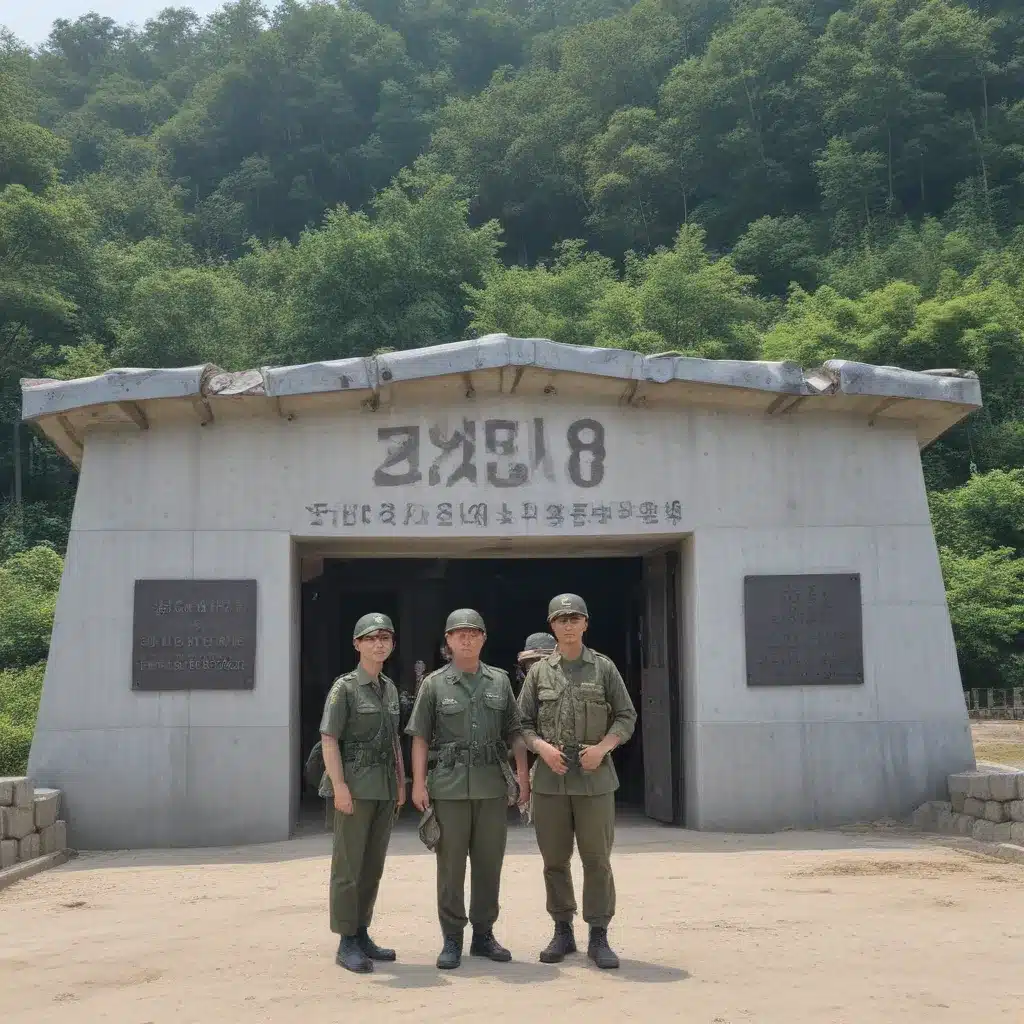
Traversing the Divide: An Unforgettable Journey to the DMZ
Have you ever wondered what it’s like to stand at the precipice of one of the most heavily fortified borders in the world? Well, buckle up, my friends, because I’m about to take you on a journey to the Korean Demilitarized Zone (DMZ) – a place where the past, present, and future collide in a way that will leave you awestruck and introspective.
As a seasoned traveler, I’ve had the privilege of exploring many remarkable destinations, but the DMZ holds a special place in my heart. It’s a place that not only captivates the senses but also challenges the mind, forcing you to confront the complexities of geopolitics and the enduring legacies of war.
The DMZ: A Divided Land
The Korean Demilitarized Zone is a 2.5-mile-wide (4-kilometer-wide) strip of land that runs across the Korean Peninsula, separating North and South Korea. This eerie no-man’s-land, established in 1953 after the Korean War armistice, is a poignant reminder of the ongoing tension between the two nations. As I stood on the edge of this divide, I couldn’t help but feel the weight of history pressing down on my shoulders.
Klook offers a comprehensive DMZ tour that allows visitors to immerse themselves in this unique and fascinating region. From the stunning Imjingak Park to the sobering Unification Observatory, each stop along the way provides a deeper understanding of the complex history and present-day realities of the Korean Peninsula.
Exploring the DMZ
As I embarked on my DMZ tour, the first stop was Imjingak Park, a poignant memorial site that serves as a reminder of the anguish and separation experienced by Korean families during the war. The park’s centerpiece is the Freedom Bridge, a symbol of hope and the longing for reunification. Standing on this bridge, I couldn’t help but reflect on the human stories that have unfolded here – tales of loss, resilience, and the enduring power of the human spirit.
Venturing deeper into the DMZ, I made my way to the Unification Observatory, a vantage point that offers a breathtaking view of the North Korean landscape. As I peered through the binoculars, I was struck by the stark contrast between the lush, green hills of the South and the austere, gray buildings of the North. It was a sobering reminder of the stark division that still exists on the Korean Peninsula.
Visit Korea provides a wealth of information on the various DMZ tour options, ensuring that visitors can tailor their experience to their interests and comfort level. Whether you choose to venture deep into the DMZ or prefer to explore the more accessible sites, this website is an invaluable resource for planning your journey.
Reflections on the DMZ
As I walked away from the DMZ, my mind was swirling with a kaleidoscope of emotions. I felt a deep sense of reverence for the sacrifices made by the brave soldiers who fought to defend the principles of democracy and freedom. But I also couldn’t help but feel a pang of sadness at the enduring division that continues to shape the lives of the Korean people.
In a world that often seems dominated by conflict and division, the DMZ serves as a poignant reminder of the fragility of peace and the importance of cross-cultural understanding. It’s a place that challenges us to confront our own biases and preconceptions, and to strive for a future where walls are torn down and bridges are built.
The Importance of the DMZ
The Korean Demilitarized Zone is not just a geographical location; it’s a symbol of the ongoing struggle for peace and unification on the Korean Peninsula. As Governor Brian P. Kemp of Georgia stated, “For decades the Korean Demilitarized Zone has served as a boundary between democracy and tyranny. It was truly humbling to reflect on the service, sacrifice, and legacy of the thousands of Koreans and Americans who fought and died to preserve the freedoms of the Korean people.”
The DMZ not only serves as a physical reminder of the division, but it also represents the broader geopolitical complexities that have shaped the region’s history. As tensions continue to simmer between North and South Korea, the DMZ stands as a stark symbol of the ongoing struggle for peace and stability in the region.
Connecting with the Korean Community
During my time in Seoul, I had the opportunity to immerse myself in the vibrant and welcoming Korean community. From exploring the bustling markets of Myeongdong to indulging in the culinary delights of Gangnam, I was consistently struck by the warm hospitality and deep cultural pride of the Korean people.
One of the highlights of my trip was visiting the Hotel Stay Inn Seoul, which served as the perfect home base for my DMZ adventure. The hotel’s staff not only provided exceptional service but also offered invaluable insights into the history and significance of the DMZ, further enriching my understanding of this remarkable place.
Conclusion: A Journey of Reflection and Appreciation
The Korean Demilitarized Zone is a place that defies easy categorization. It is a stark reminder of the devastating consequences of war, but also a testament to the resilience and determination of the Korean people. As I reflect on my experience, I am left with a profound sense of gratitude for the sacrifices made by those who fought to defend the principles of democracy and freedom.
Whether you’re a history buff, a geopolitical enthusiast, or simply someone who seeks to broaden their horizons, a visit to the Korean Demilitarized Zone is an experience that will undoubtedly leave a lasting impact. So, if you’re planning a trip to Seoul, be sure to carve out some time to explore this remarkable and thought-provoking destination. Who knows, it just might change the way you view the world.

